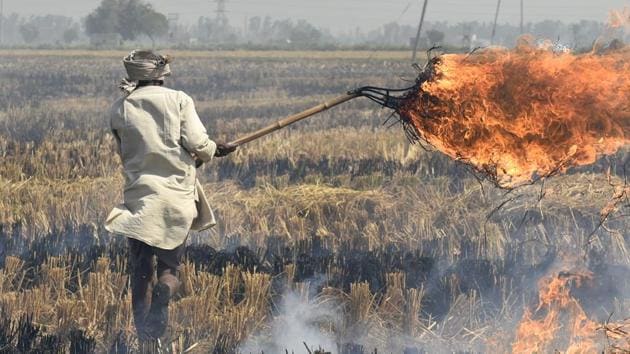NASA data to help monitor dust, smoke pollution in Delhi-NCR
The speciated data from NASA’s Multi-Angle Imager for Aerosols satellite will be useful for policymakers to identify and target different sources of air pollution on a real-time basis over the entire geographical location without adding more ground-based sensors.
Beginning 2021, ‘speciated air pollution data’ from the National Aeronautics and Space Administration’s (NASA) Multi-Angle Imager for Aerosols (MAIA) satellite will be used by Delhi researchers to analyse how the health impact of dust pollution differs from that of crop burning.

Delhi and its neighbouring areas are one of the 12 geographical locations for which the satellite will provide speciated air pollution data. Of the 12 locations, three are in Asia -- Delhi, Beijing and Israel.
Set to be launched in 2021, the payloads aboard the MAIA satellite will analyse electromagnetic radiations and waves to study the sizes, compositions and quantities of particulate matter in the air.
In Delhi — one of the most polluted cities in the world — road dust, vehicular emission and crop burning in neighbouring states are major sources of air pollution, especially in winter months.
“This is the first time any satellite is attempting to provide speciated data, meaning we will be able to clearly tell whether it is the gaseous components or the volatile organic compound leading to pollution,” said Sangnik Dey, an international collaborator of the MAIA mission.
Since the data will be for a 400x400 sq km area for a few hours every day, Indian Institute of Technology Delhi is working with a team of international collaborators on an algorithm that combines the satellite feed, ground-based sensor inputs and a chemical transport modelling to provide continuous 24-hour speciated data.
“The satellite will provide data on pollution and pollutants only for the period that it is passing over India. Using this data, we will develop a chemical transport modelling to see how the pollutants are dispersed over the day and then combine this with data from ground-based sensors to have a dynamic pollution data,” said Dey.
The speciated data will be useful for policymakers to identify and target different sources of air pollution on a real-time basis over the entire geographical location without adding more ground-based sensors.
“If we have speciated data, we will be able to tell whether the pollution particles are acidic or alkaline, whether they are radioactive, or whether they are negatively or positively charged. This information will be crucial for studies on impact of pollution on human health. Apart from that, it will also help us identify the likely sources of pollution. The data will be as good as source apportionment data and can help policymakers control specific sources of pollution,” said D Saha, former head of Central Pollution Control Board’s air quality lab.
“Continuous speciated air pollution data is not available anywhere in India. The isolated data available is from chemical analysis of the pollutants in laboratory,” he added.
Currently, data from satellites are able to tell the particulate size alone.
“Although ground-based sensors provide the best pollution data, monitoring pollution using satellite is useful in a country as large as India. it can present the whole picture without additional cost,” said Dey.
As part of the MAIA project, the continuous 24-hour data of air-pollutant components will be compared with health data from districts and Delhi hospitals to study the link between various pollutants and the health impacts.
“Till now, we have not been able to tell whether the health impacts of high PM levels from the dust storm will be the same as that from crop burning. But with data from MAIA, that will be a possibility,” he said.
Catch your daily dose of Fashion, Taylor Swift, Health, Festivals, Travel, Relationship, Recipe and all the other Latest Lifestyle News on Hindustan Times Website and APPs.
Catch your daily dose of Fashion, Taylor Swift, Health, Festivals, Travel, Relationship, Recipe and all the other Latest Lifestyle News on Hindustan Times Website and APPs.






